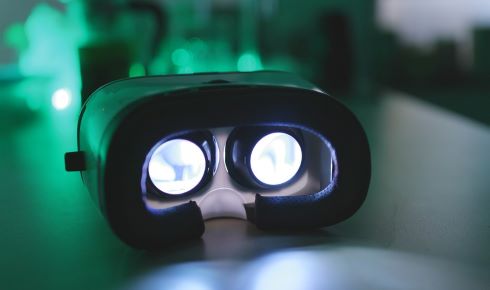The Queen of Pain

23rd February 2024
Understanding the fascinating ways our brain creates and modifies our perception of pain is the key to better pain relief, says Professor Irene Tracey
To most people, pain is a simple four-letter word that means ‘it hurts’. For the one in five people who suffer from chronic pain, it can be a mental and physical torment that dominates their lives. To Professor Irene Tracey, pain is the complex sensory and emotional experience at the heart of her research career, and an endlessly fascinating topic that stretches all the way from basic physiology to the mysteries of perception.
After beginning her research career focusing on magnetic resonance imaging (MRI), for over two decades Tracey and her multidisciplinary research teams have contributed to a better understanding of pain processing, pain perception and pain relief. Known to some as the ‘Queen of Pain’, she has a particular interest in why some people experience it long after their injury has been resolved, as well as new approaches to treating chronic pain.
Her work leading the University of Oxford’s Pain Analgesia/Anaesthesia Imaging Neuroscience (PAIN) Group requires numerous brave student volunteers to enter her and her colleagues’ ‘torture chambers’: labs equipped with all manner of devices to inflict thermal, chemical, mechanical and visceral pain on human subjects (all within the limits set by the ethics committee, of course).
As Tracey explains to The Biologist, advanced neuroimaging has recently led to important insights about the brain’s power to amplify or lessen pain. This in turn is leading to a new understanding of pain disorders and new ways to alleviate the suffering they cause, from novel pharmacological targets to creative psychological approaches.
Hi, Irene. Before we dive deeper into pain, can you put your work in context, in terms of how big a problem chronic or long-lasting pain is?
Well, firstly you have acute pain, which is what I call the good, everyday pain. That’s your pain that stops you doing a certain painful thing to look after your injury. It’s a teaching tool.
If pain is still there three or four months later – which is normally the time that tissue healing should have allowed it to go away – we then define that as chronic pain. And that can go on for a lifetime.
With that definition, one in five of the adult population are defined as having a chronic pain – migraine, backache, musculoskeletal pain, other pain conditions. So it’s a huge number, more prevalent in older people and women, for reasons we’re still working out. It’s a big problem and most of the treatments we have don’t work.
For each case there can be huge amounts of suffering alongside the actual pain. It affects people’s ability to work, to play sport, and so their quality of life; you see relationship breakdowns, poor sleep, depression, anxiety, other comorbidities. The total burden of the suffering is enormous.
Why don’t the numerous pain-killing treatments we have tend to work in these cases?
Some have some efficacy in patients, but these drugs were not developed for chronic pain. To cut a long story short, for many years we’ve just had the wrong model: we’ve thought about chronic pain as a symptom of the disease or damage that caused it, which is very much an acute pain model. And so we thought if we keep treating the symptom, keep treating the thing that caused the pain in the first place, the pain will go away.
We now have a completely different framework of thinking, which is that once someone has made that transition to chronic pain, in most cases, it is a disease in its own right, a disorder of pain. When you look at symptoms of chronic pain, there are many areas of overlap, whatever the original problem: tingling, burning, funny sensations.
I don’t know why it took so long – it’s not rocket science – but that new way of thinking means that we are now focusing on trying to understand the mechanisms of chronic pain and what causes it. We are still discovering the science of chronic pain, but at least we’ve been on the right page for a few years now. It’s a really important paradigm shift in thinking.
 Irene Tracey has a particular interest in why some people experience pain long after their injury has been resolved
Irene Tracey has a particular interest in why some people experience pain long after their injury has been resolvedI’ve heard much about your ‘torture kit’ – the various tools and facilities in your lab for causing pain in volunteers as part of your studies. Talk me through some of the ways you cause pain in a controlled and ethical way.
There are three major categories of things that can hurt you: extreme cold and heat; mechanical, which could be crushing or pricking or slicing; and chemical, like being stung.
What you try to do when you’re working experimentally in humans is to come up with devices that can simulate what people will be experiencing every day. Thermal’s a big one – we have devices that can burn or freeze in a controlled way. Mechanical is quite difficult to do without causing actual injuries. You can squash a joint until it becomes slightly ischemic [lacking blood flow], then you have mechanical and chemical together.
Electrical pain is an interesting one, because it’s not a distinct pain sensation, but the shocks, the burning and the zapping are sensations patients with chronic pain often describe. Another way to simulate some of the symptoms patients have is to use subcutaneous or topical capsaicin [the chemical in chilli that causes a burning sensation], which binds to the same receptors that measure heat.
You can either look at that on its own or you can add on some mechanical stimuli, like a poke or even just a brush, which will be much more painful because you have sensitised the area. That is simulating some of the mechanisms that go on in chronic pain, in conditions such as allodynia and hyperalgesia. You can also sensitise in a similar way with a UV burn, like a sunburn.
I find it hard to do a mechanical crush within the ethical guidelines, to be honest. But if you couple it with a chemical, ethically allowed lesion, the mechanical can start to be more painful.
The trickiest is probably visceral pain, internal pain. You’ve got two orifices you can go through: oesophageal and rectal. We have these balloons that you put down someone’s throat and blow up until it’s painful. As for the rectum… we haven’t done so much of that in the last few years. Hard to recruit volunteers for that one.
Talk me through the main ways you can measure pain. How does brain imaging of a person in pain compare to people’s more subjective, self-reported perception of pain?
Capturing pain is very reliant on subjective report, which can be a qualitative description or ratings – both how intense it is and how unpleasant it is. Those two generally go together, but not always. To understand that, imagine you are on a long journey with young children and you’re playing a Disney tune over and over again at a certain volume. It’s got a certain volume or intensity. But after it’s played 100 times on a three-hour journey, it’s the same volume but the pleasantness will have shifted…
You can do all sorts of weird and wonderful things to change people’s expectations so they can know that something’s painful but they don’t find it unpleasant, or can actually even start to like it.
Rating can be a challenge, for example in non-verbal people or because people may not have experienced extreme pain. My calibration of 10 out of 10 pain changed when I went through childbirth. You might use visual analogues as anchors, so you say 10 is trapping your hand in a car door. Or for non-verbal people or babies, you can use picture scales – happy or sad faces.
To understand pain in terms of the mechanisms, or to understand pain in people who may be unconscious or have dementia, that’s where non-invasive imaging techniques come in – tools like electroencephalograms and functional MRI. These have been used to understand how the brain processes pain, which regions are involved in pain.
I’ve spent 35 years working with these tools and looking at the spinal cord to study the gap between injury and perception – so either lots of injury and no pain, or no injury and lots of pain, and everything in between. Where the pain gets turned up, where the pain gets turned down. Where the pain is rerouted to make it a different quality.
But these imaging techniques are not anywhere close to being used as a pain rater, unless the person literally cannot tell you. They are tools to help you understand why the person is describing their pain in a certain way, to look under the bonnet.
It’s worth mentioning too that with pain scales you might have a person who has been in pain for 10 years, their life has been wrecked by it and they are anxious, depressed, and you are asking them to put a number on it. It doesn’t capture it and the imaging can show all the different ways the person is suffering behind the scenes.
 Virtual relief
Virtual reliefAs our awareness of how the brain processes pain develops, new approaches are being introduced to tackle chronic pain in different ways. The first therapy using virtual reality (VR) for chronic pain was licensed for use in the US in 2021. It uses immersive 360° imagery to transport patients with lower back pain to relaxing natural environments and uses audio to guide them through psychological exercises.
A similar approach is being used to distract patients in more acute pain scenarios, such as burn patients having dressings changed, and in November 2023 the VR-based Smileyscope was approved for use, which uses video of gently nibbling fish to modify the perception of injections for children.
And it must be difficult to disentangle what is the actual pain and what is fear or anticipation or memories associated with pain.
Yes, it is a huge network that is activated and it’s been so interesting dissecting that network so we can say “that region is on for that reason and that is on for that reason”. And we’re still trying to find out where the actual ‘hurt’ is, that pure quality of something hurting, and we don’t quite know where that is encoded.
Pain is a rich experience that forces you to attend to it, localise it, withdraw, make a decision. Those are all part of the package of feeling. It’s a bit like how you see a tree and in our brain there is more going on than just the visual cortex; it is also all of your experiences of a tree and why you are looking at it.
Talk us through this area of the brainstem that is able to modulate and modify that signal from the nervous system, and either bring attention to it or dull attention to it. That’s so crucial to the pain we feel, isn’t it?
It’s old brain, your big old reptilian bit that keeps you alive, and in that region you’ve got this incredible machinery – I call it the gatekeeper of perception – whose job it is to control what’s allowed in, suppressing signals or amplifying signals at the entry point to the spinal cord. What comes in to the brain can be greater or less than what came into the spinal cord. It’s hugely powerful at setting the gain.
This is really old – it’s shared across species – and it’s really important in everyday pain. But it is critically important in chronic pain. A dysfunction in that system – either the inhibition pathways not working as well or the facilitatory pathways really going crazy – can make what is a small injury or touch really hurt.
If so much of pain is based in the brain, can the way we think about pain actually influence how much pain or unpleasantness we experience?
If you are in a pain state, to pay attention to it and become anxious about it… all that’s only going to make it worse. It’s going to literally, physiologically, turn up the volume.
But sometimes telling people that can make them feel like we don’t believe their pain. That’s where the imaging data can be incredibly powerful – patients can see all these lights activating when they are more anxious, and then the light is much calmer if they’re not. That can be a really great segue to get people to engage with the fact that the brain can control how the pain is experienced, and they have some control over how they let the pain experience impact them, and they might be able to access mechanisms that will help turn it right down.
We’ve shown, with imaging, that distraction and changing expectations can really change the way pain is amplified or reduced in the brain. So these are free endogenous analgesic systems and some people, we’ve discovered, are just naturally really good at tapping into them, while others need help.
 Up to one in five of the adult population suffer from a form of chronic pain, which are increasingly defined as distinct diseases or disorders.
Up to one in five of the adult population suffer from a form of chronic pain, which are increasingly defined as distinct diseases or disorders. You understand the influence of the brain on your experience of pain far more than most people. Does it help when you hurt yourself?
Ha ha, no! I don’t know… I used to do a lot of sports and perhaps I was pretty good at dealing with injuries and things like that. But when it came to childbirth – I’ve had three kids – I was like: “Give me the epidural!” You can’t think your way out of that pain.
What does the future of pain studies and pain relief look like?
There’s a far greater awareness in the patient community and the medical community about the need to attack this from both a pharmacological and a psychological perspective – and that the psychological manipulations are physiological; they are neurochemical. I think imaging has done a really good job of getting people to buy into and engage with that idea. These talking therapies work because they’re real, in a physical sense. It’s not just changing the way people describe it.
The second thing has been the paradigm shift to thinking about chronic pain as a disease in its own right. For the first time the International Classification of Diseases has classified seven different pain conditions as pain diseases. That’s helped people reframe how they do their research and it’s bearing fruit.
We’ve got new discoveries, new mechanisms, both in the peripheral nerves and in other regions that we think are really important in chronic pain, and then new drugs and therapies to come in to target them. I’m very optimistic that in the next decades we’re going to have completely novel therapies to treat chronic pain that are targeting the disease and the mechanisms of chronic pain. That’s super exciting.
Professor Irene Tracey CBE is vice-chancellor of the University of Oxford and professor of anaesthetic neuroscience at the Nuffield Department of Clinical Neuroscience, where she leads the Pain Analgesia/Anaesthesia Imaging Neuroscience (PAIN) Group.


